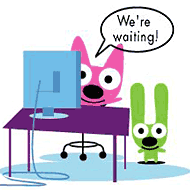Instructional design/Affective behaviors/Designing for the Affective Domain: The Design Document
Introduction
Now that you know a little bit about the Affective Domain, it's time to start thinking about your affective subject matter and how you are going to design for it. You must create a design that helps learners to:
- be open to new information
- actively participate
- attach worth to new ideas
- incorporate the new ideas into habitual practice AND
- be an advocate for the new concepts.
As you create your design, the design document is where you document your design decisions. What decisions do you need to make so your design caters to the affective domain? What will your objectives look like? What will your instructional presentation look like? What are the concepts and procedures you'll teach and how will they be sequenced? Are there prerequisite or preconceived attitudes that will influence the affect of your lessons? What about motivation? Think about these questions as you take a look at our beginning example.
To Start
Let's look at some lessons on manners, after which we will see what a design document might have looked like for these examples. Hallmark has created two characters, Hoops and Yoyo, as part of their marketing campaign. On their website, Hoops and Yoyo teach us proper manners. Use the link below to view each lesson then come on back and let's talk some more.

Click [| here] to watch the lessons on manners.
What can we learn?
Were these examples of instruction designed to bring about affective behaviors? Why? What would a design document look like for one of these lessons? Let's look at an example document by using the following link. Remember to come back after you're done.
Click here to read the example Design Document.
What elements did you notice in the example design document? How did these elements account for the affective domain?
TASK: Answer these questions by clicking on the "edit this page" tab found at the top of the screen. Just add your response below the line and save page. Then, click next to go on.
- The hoops&yoyo's animations seem to be good examples of instruction designed to bring about affective behaviors. They use funny characters to catch attention, and teach values of what are appropriate and inappropriate while showing actual ways of how to act appropriately. While the example document says that the target audience is "general public," I guess the movies are more towards children, or possibly, those who from other cultures. The key words of "valuing" seems to be something make the lesson in the affective domain. Kei (discuss • contribs) 21:26, 22 February 2014 (UTC)
- The idea of having humor in the lesson certainly would get the attention of the learner, but it would have to be done in a way that is respectful to the learner so that they are not reluctant to participate and entire into the responding phase. Sometimes humor can be taken the wrong way and turn learners off, so it is important to know your audience. gdysard 5:35 (EST), 18 Feburary 2014
- I noticed that the design document described the instructional sequence for opening a door. Prior to teaching how to open a door, or perhaps afterwards, is the need to mention that it is a cultural manner within the affective domain; this could be added to the design document. Within the affective domain an individual may need to be sensitive to historical or cultural contexts, i.e. gentlemen opening doors for women. Cahonen (discuss • contribs) 20:55, 19 February 2014 (UTC)
- I know this is an example for illustration, but it seems a bit simplistic to me. I think it might take more than humor to get someone to change behavior. I'd add additional activities for example, role play, to help with the characterization phase, which is the real desired end state. Jpankin (discuss • contribs) 22:44, 21 February 2014 (UTC)
- When considering the video on how to properly open a door I see how it is related to the Affective domain because it is concerned with values. Furthermore, the "receiving" and to a lesser extent, the "responding" elements can be seen: Music and colors catch the learner's attention and buttons help learner interact with the learning environment. The rest of the learning situation seems to be deficient in the other respects of the affective domain. Besides seeing that the dog gets hurt in the second video, there is no opportunity for "valuing." Furthermore, I saw no opportunity for "organization" or "characterization." Elbow8703 00:25, 25 February 2014 (UTC)
| Instructional Design | Affective behaviors | < Back | Next > |